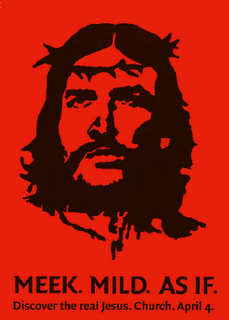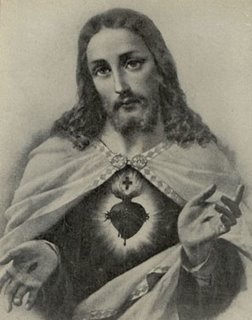
Now, I’m not saying that I’m an admirer of Che Guevara, but I do believe firmly that there was a radical and arguably apocalyptic side of Christ that has been emasculated, bled out, and softened in our popular piety. It wasn’t all sweetness all of the time. He had some pretty tough things to say at times, and the rich were often his target, but that leads me to Friar’s other post - St Vincent De Paul . Friar posits this challenge:
All of us who do charitable service, works of justice, or community organizing need to ask ourselves why we are doing these things on behalf of the poor. Is it because we love them? Or is it because we hate the rich? Or maybe it's because of our righteous indignation at the systemic injustice of this world. Or maybe, God forbid, it's our liberal guilt that motivates us.
Love is the only valid motive for our works of Christian service. Indeed, it's the only valid motive for anything. After all, it's the only motive God has ever known.
Well now, that’s food for thought… Food for thought. How much of our concern for the poor is really resentment towards the wealthy? How much of that anger is justified as righteous indignation at injustice in the world, and how much of it is petty jealousy? Can it sometimes be reverse snobbery?
By the way, my favorite pop art image of Jesus is Jesus the Carpenter by Frances Hook, although I’m not crazy about Hook’s other images of Jesus. An honorable mention goes to the image below of the Sacred Heart of Jesus. I suppose I’m sentimental about it because I remember seeing this or a similar one on the wall of just about every house I ever stepped into in Ireland.

10 comments:
In imaginative prayer, people imagine themselves having a conversation with Jesus, and it helps to have a concrete image of hum. To me he usually looks like the Jesus in a movie I liked - picture but sometimes he takes on other bodies.
That looks familiar. What movie was that from?
The 1999 movie "Jesus" :-)
Thanks Jeff. I actually new a kid named Che in elementary school; if I could go back I would try to hang out with his parents. :)
I always thought that the famous photo of Che was obviously Christ-like, and his death was clearly interpreted as martyrdom. It's interesting how Christian religious language and imagery were used in that way by many people who consider themselves secular.
Che himself was definitely a romantic figure.
I read and enjoyed Friar Minor's post as well. It's ironic that the word "charity" comes from "caritas," which means love, but has come to mean for so many something one does when one has extra time and money to feel good about oneself. It really should mean social action moved by Christ-like love.
Hi Friar,
I bet that kid was popular with the girls in High School too, just because he had the name "Che". :-)
Liam,
I saw an interesting program about Fidel Castro on PBS a few weeks back. Apparently, Castro was worried about Guevara's charisma in competition to his own. Cuba wasn't big enough for th both of them. The program alleges that Fidel pretty much got rid of him by sending him out on a fool's errand in the mountains of Bolivia, and cut him off from all support and aid... That was the end of Che.
I think you're right about the religious iconography in the famous "Che" poster. That sort of thing is often carefully cultivated. I got the same sense when seeing Bobby Sands and Francis Hughes on the Blanket Protest and Hunger Strike in Northern Ireland. They looked like the Jesus in the Baltimore Catechism.
Hi Jeff, long time not see.:-).
I like best the image with the sacred heart.
Paula!!! :-) :-) :-)
How have you been? We've missed you! Hope you enjoyed your trip home. It's nice to see you blogging again.
One of my favorite images of Jesus is 'The Risen Christ by the Sea', which is put out by a couple who publish the 'Joyful Noiseleter': http://www.joyfulnoiseletter.com/risen_Christ.asp
It's interesting to see so many of the images of Jesus looking like a European man; I think that in reality he probably looked more like a modern-day Palestinian; which is something to contemplate for a while...
Hi Steve,
Yes, I think it is all part of enculteration. Every culture relates to a Jesus that looks like them. The Jesuits working in Japan used to paint Jesus and the Madonna as Japanase as part of their evangelization.
I think we always need to be careful to bear in mind at the end of the day though, that Jesus was a mediterranean, Galilean Jew. For example, we should learn to picture him wearing the traditional Jewish garment with the prayer fringe, or tassel, called a tzitzit.
"Whatever villages or towns or countryside he entered, they laid the sick in the marketplaces and begged him that they might touch only the tassel on his cloak; and as many as touched it were healed."
Mark 6:56
"A woman suffering hemorrhages for twelve years came up behind him and touched the tassel on his cloak. She said to herself, "If only I can touch his cloak, I shall be cured."
Matthew 9: 20-21
Post a Comment